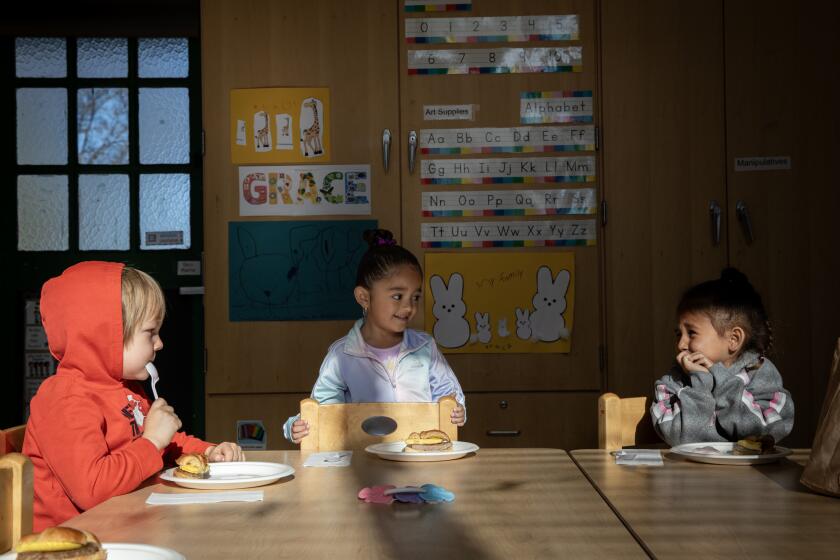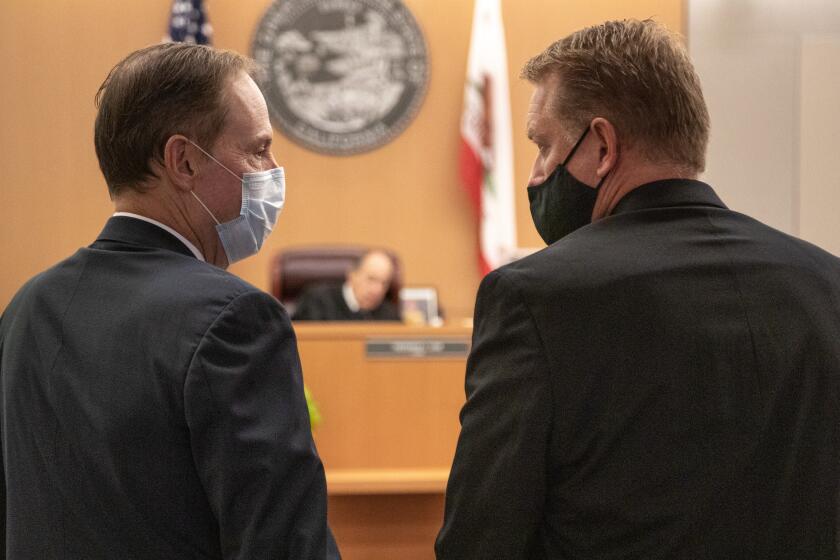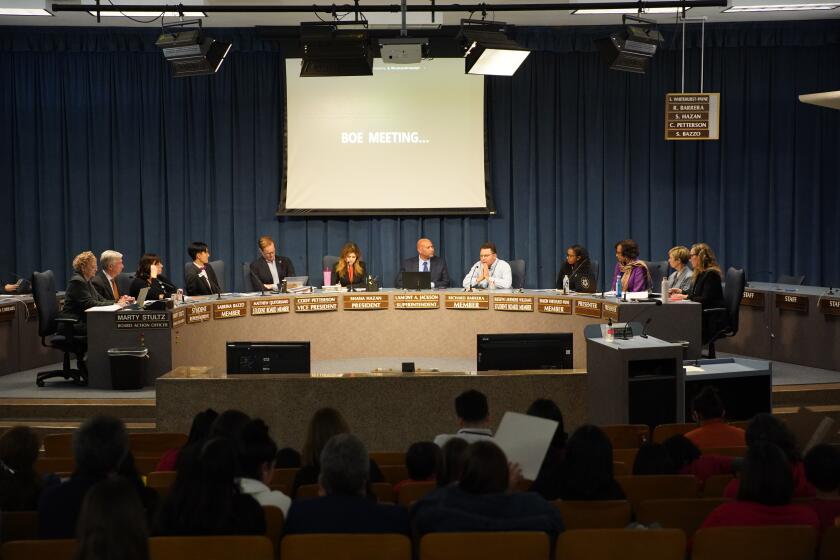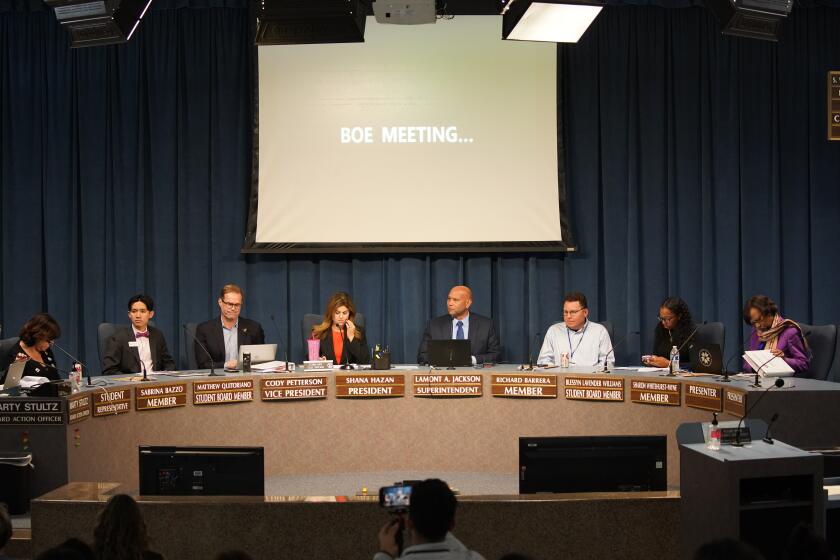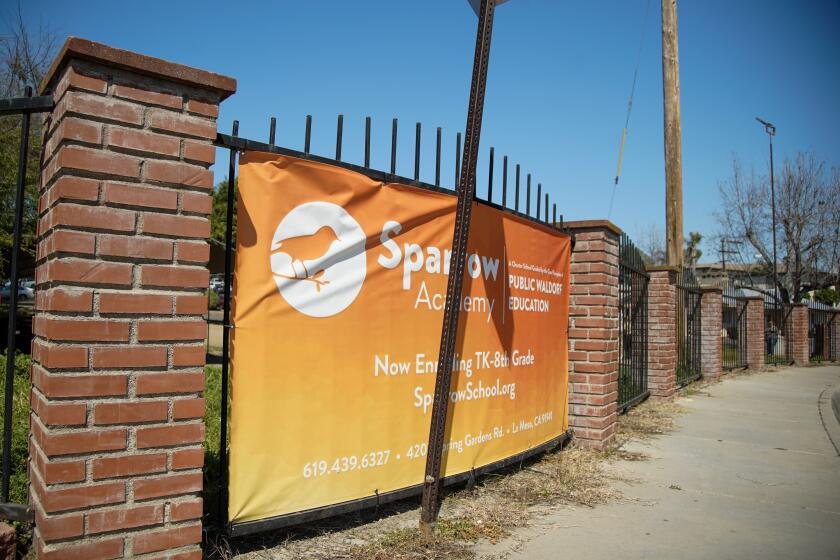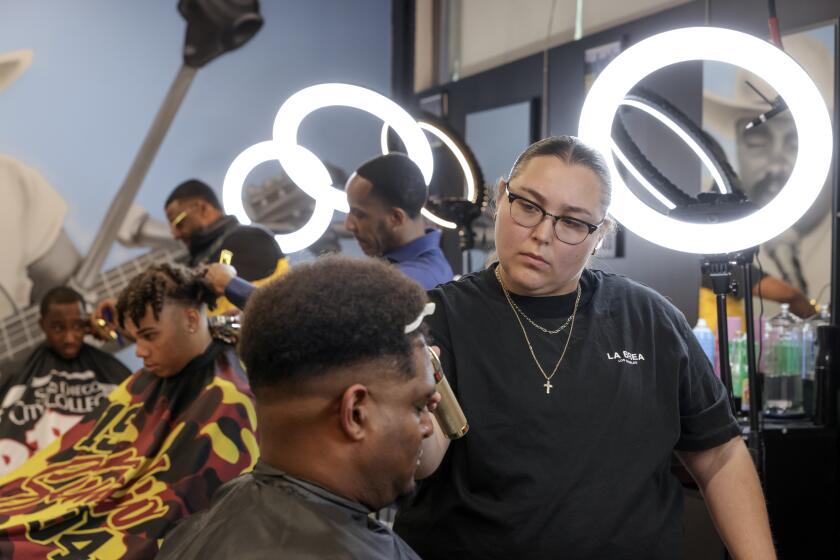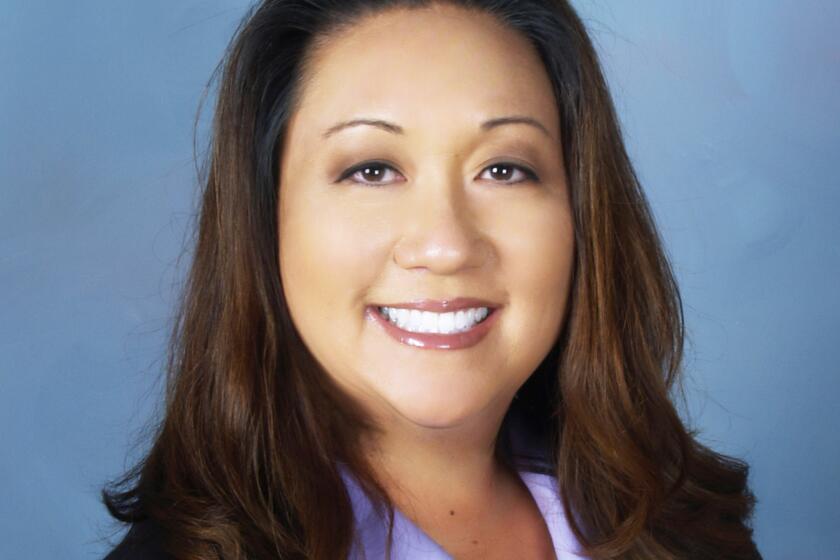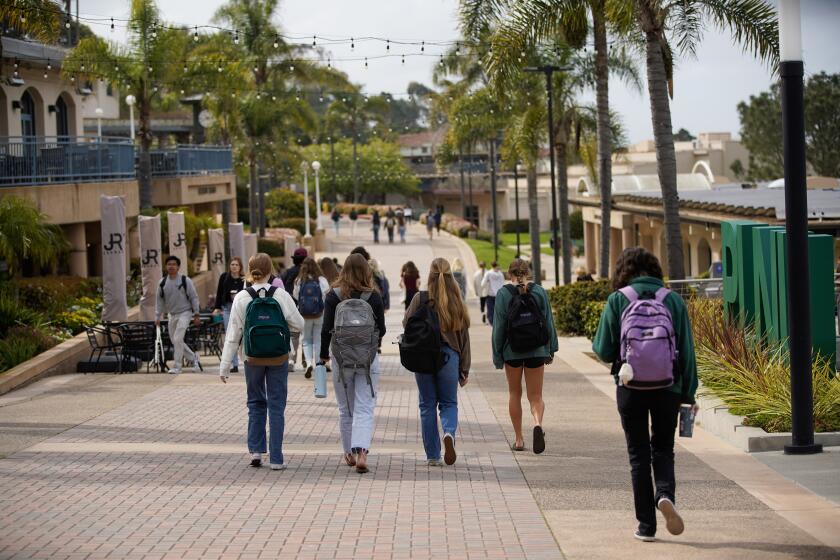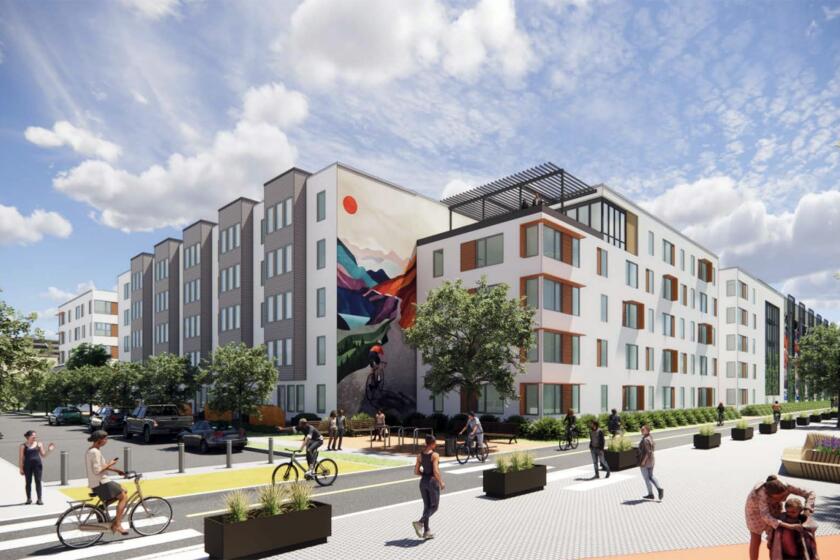New data show more San Diego Unified students are failing, receiving “in progress” grades

Parents’ group points out 1,000 more high school students failed a course than at same time last year
New San Diego Unified data show that 1,000 more high school students failed at least one class this fall compared to last year.
About 26 percent of high school students failed at least one class at the end of the first quarter this school year, compared to 21 percent around the same time last year, district data show.
San Diego Unified is one of many districts across the country experiencing an increase in failing and struggling students. The pandemic and school closures have made it difficult for many students to learn or access school remotely, and many students’ mental health is suffering, parents and advocates say.
The new data, which came to light from a public record request by a parent watchdog group, adds another layer to some grade information that Superintendent Cindy Marten recently announced at a school board meeting.

Marten said that fewer high school students are failing or are at risk of failing — meaning they received at least one D or F grade — than last year at the same time. Marten said 40 percent of high school students received at least one D or F, down from 47 percent the same time last year.
“Because of the hard work of teachers and students and parents, we didn’t have the kind of drop-off in grades that I think a lot of us were fearing,” San Diego Unified Board President Richard Barrera said in an interview Tuesday.
The parent group that filed the record request, Reopen SDUSD, has been calling for the district to serve more students in-person and has become critical of the district in other matters, such as the district’s public comment practices.
The Reopen UDUSD group argues that the grading statistic Marten chose to report — which reflects a decrease in the percentage of students failing or at risk of failing — obscures the fact that more students are failing.
“These are kids that have not failed classes in the past, so something is happening in this format that is causing them to fail,” said Emily Diaz, a parent who filed the record request on behalf of Reopen SDUSD.
Marten shared only some grade data in her prepared speech. Grade data for various student groups was missing, and so too were grades for middle school students, who have not yet finished their first semester.
During the board meeting, Marten did acknowledge that students are getting more F grades, and that the rise in F grades was a concern.
According to the new data, F grades now make up 16 percent of all grades given to high school students, up from 7 percent during the fall of last year.
F grades are surging at the same time high school students are taking fewer courses than they were last year.
High school students switched to the quarter system this year, meaning their courses are accelerated but they have half the course load.
Diaz said she is concerned that students are failing more courses at the same time they’re taking fewer of them.
“If you have only three courses, chances are less you’re going to get an F; whereas if you have six (courses) your chances are higher,” she said.
Barrera said the district has always had ways of supporting struggling students, but the depth of learning loss and the social-emotional struggles caused by the pandemic mean the district needs to deploy more resources than usual to help students.
“The concern is that we have students who are falling so far behind that there will need to be significant work to catch those students up if they’re going to be able to graduate on time,” Barrera said.
The new data also show an increase in “in progress” grades issued.
There were 1,230 “in progress” grades given this fall, compared to only 12 last year and three the year before that.
“In progress” grades mean a student needs more time beyond the end of a grading period to “demonstrate the competency necessary to earn course credit,” according to the district’s grading policy.
Marten said at the board meeting that the district wants teachers to issue more “in progress” and “incomplete” grades, to give students more time to master course content.
In October, the school board approved a new grading policy that is meant to give students more retakes or other chances to learn from their errors and improve their grades, rather than immediately giving students a failing grade that is difficult to recover from.
Other school districts, such as the Sweetwater Union High School District, have been encouraging teachers to give more alternative grades such as “incomplete,” to be more forgiving and understanding of student hardships caused or exacerbated by the pandemic.
Diaz said San Diego Unified’s surge in failing students is a result of schools remaining closed.
“It’s clear that there are a lot of kids that are struggling, and if the district is choosing to stay closed, then they really need to look at other options to help struggling students,” Diaz said.
Diaz said San Diego Unified should be increasing the number of students it serves in person.
Currently the district is closed for in-person instruction, but it has been serving small groups of students with high needs, in what it calls its “Phase One” of reopening.
As of mid-December, fewer than 1,900 students, or 2 percent, were participating in Phase One. That’s down from about 3,000 students in mid-November.
District officials initially said as many as 12,000 students would qualify for Phase One.
Noting that San Diego Unified has roughly 11,000 students with disabilities and 19,000 English learners, Diaz said “to only have less than 2,000 students receiving on-site services, that’s appalling.”
Barrera said the number of students being served in Phase One is disappointingly low, and it’s likely that both students and teachers are choosing not to participate in Phase One because of the current COVID-19 surge.
Phase One is voluntary for teachers, so schools do not have to offer Phase One sessions.
As of Tuesday, San Diego County’s daily new COVID-19 adjusted case rate was 38.1 per 100,000 people, more than five times the rate that the county would need to climb out of the state’s most-restrictive, purple tier. Meanwhile local hospitals are being overwhelmed with COVID-19 patients.
“The bottom line to all of this is: if the virus is going to be spreading at these levels, I just don’t have high expectations for the number of teachers or students who are going to be coming in for Phase One,” Barrera said Tuesday. “It’s a hard conversation to have when we’re seeing the virus at these rates.”
On Wednesday, Gov. Gavin Newsom announced a $2 billion incentive plan to encourage schools to reopen as early as mid-February. But San Diego County’s COVID-19 case rate is still too high to allow schools to reopen. If the county’s rate decreases enough, it’s unclear whether San Diego Unified or other local school districts will accept the incentive and reopen.
Get Essential San Diego, weekday mornings
Get top headlines from the Union-Tribune in your inbox weekday mornings, including top news, local, sports, business, entertainment and opinion.
You may occasionally receive promotional content from the San Diego Union-Tribune.

